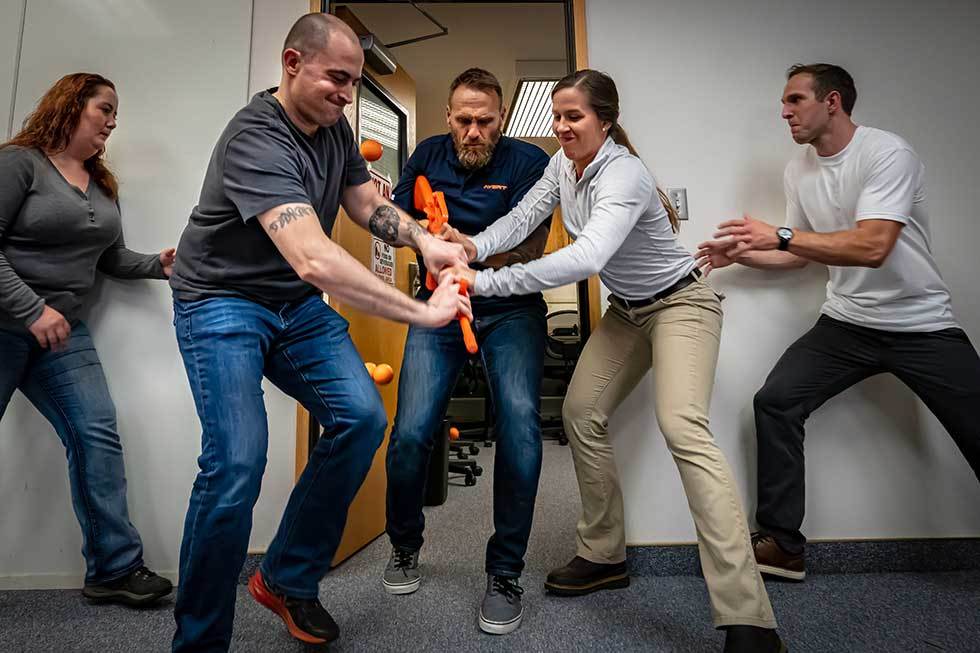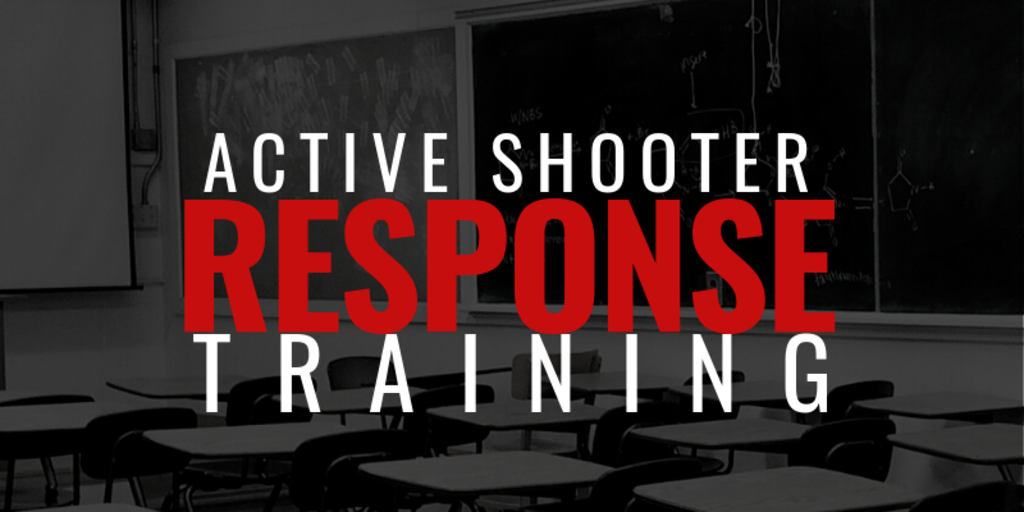The Value of Active Shooter Training in High-Risk Settings
The Value of Active Shooter Training in High-Risk Settings
Blog Article
The Vital Role of Energetic Shooter Training in Enhancing Emergency Situation Action Methods in Different Environments
Active shooter training has actually arised as a fundamental component in refining emergency situation reaction techniques across diverse setups, from instructional institutions to corporate settings. By furnishing individuals with customized understanding and skills, these programs not only prepare individuals for prospective crises however also cultivate a culture of recognition and partnership. The efficiency of such training hinges on different factors, including the details context in which it is implemented and the recurring commitment to enhancement. Discovering these dimensions discloses essential insights that might dramatically influence preparedness and reaction outcomes when faced with startling hazards.
Value of Energetic Shooter Training
In a period noted by increasing issues over public security, the value of active shooter training can not be overemphasized. As occurrences of weapon physical violence in public rooms remain to rise, organizations across numerous sectorsâEUR" schools, offices, and public venuesâEUR" are recognizing the necessity of preparing their personnel and communities for such emergencies. Energetic shooter training outfits people with vital skills and knowledge to respond effectively in dangerous circumstances, potentially decreasing casualties and saving lives.
The training not only concentrates on prompt feedback actions, such as discharge and safeguarding in location, yet additionally promotes a culture of awareness and preparedness. By involving in sensible simulations and discussions, individuals can recognize prospective vulnerabilities within their environment and create methods for mitigating dangers. Such training enhances interaction and sychronisation among group members and first responders, guaranteeing a more unified strategy during situations.

Trick Components of Effective Training
Reliable energetic shooter training comprises a number of vital components that improve readiness and response abilities. Practical scenario-based simulations are essential. These exercises submerse individuals in high-stress situations that simulate possible energetic shooter occasions, allowing them to practice decision-making and physical reactions under pressure.
Furthermore, training needs to consist of an extensive understanding of communication protocols. Individuals need to be well-versed in how to relay vital info to law enforcement and fellow people during an incident. This includes using emergency notifies and understanding the hierarchy.
One more essential component is the consolidation of psychological health and wellness understanding. Training needs to resolve the psychological influence of energetic shooter circumstances, furnishing participants with coping strategies and resources to support their mental well-being post-incident.
Furthermore, normal refresher course programs are crucial to guarantee that skills stay sharp and knowledge is up-to-date. This continual education and learning enhances the significance of preparedness and cultivates a society of security within organizations.
Training for Different Atmospheres
Active shooter training must be tailored to the specific environments in which individuals run, as each establishing presents one-of-a-kind difficulties and dynamics. For instance, training in a business workplace will certainly vary dramatically from that in a school, mall, or medical care facility. Each atmosphere necessitates a customized method that takes into consideration factors such as format, population thickness, and available getaway paths.
In schools, training programs ought to emphasize lockdown procedures, interaction protocols with police, and techniques for shielding pupils. On the other hand, in read the full info here corporate settings, training may concentrate on emptying strategies, identifying dubious actions, and making use of available sources for self-defense or shelter-in-place situations.
In addition, public locations like shopping malls or sporting events need extensive crowd administration techniques, with an emphasis on rapid reaction sychronisation amongst security workers and regional regulation enforcement.
In healthcare settings, training should attend to details vulnerabilities, such as the presence of clients who may require instant help. By recognizing the distinctive characteristics of each environment, organizations can develop effective training modules that boost readiness and boost total safety and security, ensuring that individuals are geared up to respond appropriately in varied dilemma scenarios.

Structure a Society of Understanding
Producing a culture of recognition is basic to improving safety and security actions in any type of environment, as it empowers people to acknowledge potential hazards and react proactively. This culture demands continual education, open interaction, and the combination of safety methods into daily regimens.
Organizations ought to focus on active shooter training as component of their overarching safety and security technique, guaranteeing that all employees understand the details risks associated with their setting. Regular training sessions cultivate alertness and familiarity with emergency treatments, encouraging individuals to continue to be alert to uncommon habits or circumstances.
Furthermore, cultivating a society of awareness includes developing a setting where reporting suspicious activity is both encouraged and stabilized. active shooter training. Staff members need to really feel comfortable sharing their issues without concern of revenge. This can be achieved through clear networks of interaction and encouraging management
Additionally, engaging in neighborhood partnerships can increase recognition past organizational borders, advertising a common duty for safety and security. Initiatives such as workshops, drills, and informational sessions can further enhance collective watchfulness. Eventually, constructing a society of pop over to this site recognition not just prepares people for possible situations yet likewise reinforces the total resilience of the organization versus threats.
Assessing Training Effectiveness
While regular training sessions are important for preparedness, assessing their effectiveness is equally crucial to ensure that personnel are read here equipped with the necessary skills and knowledge to react appropriately in case of an energetic shooter situation. Analysis procedures must include both qualitative and quantitative analyses to determine the effect of training on action capacities.
Surveys and feedback from individuals can supply important insights right into the training's significance and applicability. Furthermore, carrying out practical drills and simulations permits organizations to observe real-time decision-making and synergy under stress. Evaluating the end results of these workouts helps recognize strengths and locations for enhancement.

Including stakeholders, consisting of police and emergency responders, in the examination procedure can boost trustworthiness and give a comprehensive perspective on training efficacy (active shooter training). Ultimately, a methodical analysis approach ensures that active shooter training stays a crucial part of a company's emergency situation feedback method, promoting a safer environment for all
Conclusion
Active shooter training is essential in fortifying emergency response strategies across diverse environments. By equipping individuals with the necessary abilities and expertise, such training boosts readiness and sychronisation during vital events. Customized strategies for numerous setups guarantee that particular vulnerabilities are addressed, cultivating a society of understanding and continuous education and learning. Eventually, the execution and analysis of reliable training programs contribute considerably to mitigating the influence of energetic shooter situations, thereby guarding lives and improving neighborhood durability.
Report this page